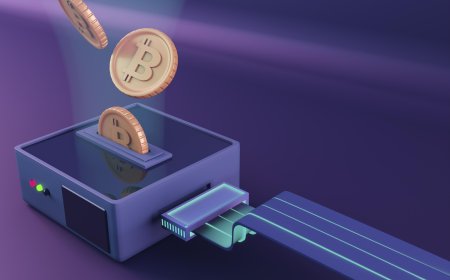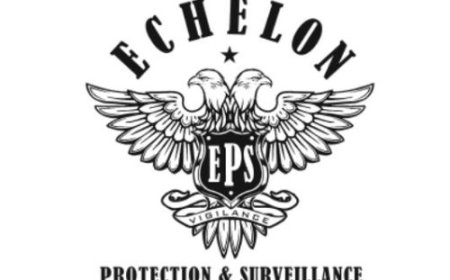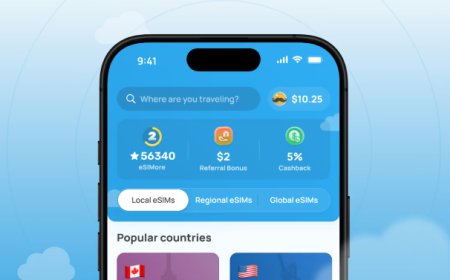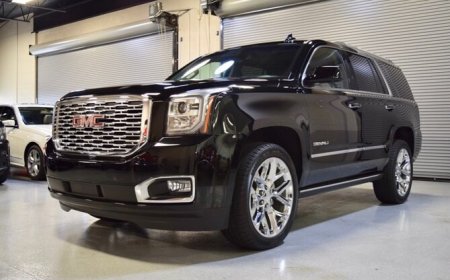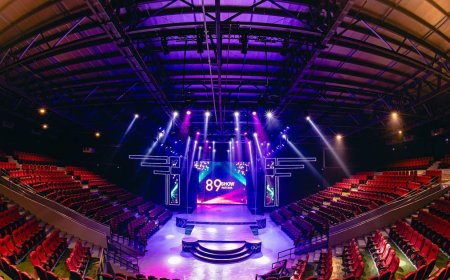How to Stay Connected: Phone and Internet on the Everest Base Camp Route
Conquer the classic Everest Base Camp route – panoramic views, glacier walks, and authentic Nepalese hospitality await.

Staying in touch during theEverest Base Camp trek is simpler now because of better phone and internet options along the way. Most teahouses and lodges offer Wi-Fi, but the speed can be slow, and connections might drop since it's in a remote area. A good way to stay connected is by getting a local SIM card from Ncell or Nepal Telecom, which work well on most of the trail, especially in popular spots like Namche Bazaar and Dingboche. Just know that the signal can dip at higher elevations or in less-traveled areas.
If you want to keep connected, it's smart to bring an unlocked smartphone that works with Nepalese SIM cards. Many teahouses have charging options, but it can be slow and a bit pricey, so having a portable power bank is a good idea. For those who want to be extra cautious, some trekkers rent satellite phones or GPS devices with SOS features, especially if you're venturing off the main path or climbing above base camp.
Using mobile data can help with maps, weather updates, and keeping in touch with family, which is nice during the trek. Just remember, you might not always have a signal, so it's a great chance to enjoy the stunning nature around you. With some good prep, you can stay connected while still soaking in the amazing Everest region.
Mobile Network Coverage on the Everest Base Camp Route
The mobile network along the Everest Base Camp trek has gotten better over the years. Major Nepalese providers like Ncell and Nepal Telecom now offer 3G and 4G services in key areas like Lukla, Namche Bazaar, and Dingboche. That said, the signal can be spotty because of tough terrain and high altitudes, with weaker connections in more remote spots. Knowing where you can get a signal helps you plan your communication and safety. Getting a local SIM card is a good idea for better call and data access, as international roaming can be pricey and unreliable in the mountains. Being aware of where you can connect also lets you enjoy the scenery without losing touch.
How to Buy and Use a Local SIM Card in Nepal
Getting a local SIM card is a smart way to stay connected during your trek to Everest Base Camp. You can buy SIM cards from authorized shops at Tribhuvan International Airport in Kathmandu or at local markets. Ncell and Nepal Telecom are popular choices, offering good data options and voice plans. Dont forget to bring your passport to register the SIM, as it's required by law. Make sure your phone is unlocked and compatible. Local SIMs work well along the trek and are cheaper than international plans. Top-up vouchers can be found in towns along the way, so youll have service throughout your trip. This makes it easier to keep in touch with guides, places to stay, and family.
Wi-Fi Availability at Tea Houses and Lodges
Most tea houses and lodges on the Everest Base Camp trail now have Wi-Fi for trekkers, but the quality can be hit or miss. Wi-Fi can be slow and not very dependable due to limited bandwidth and remote areas. Many lodges charge a small access fee, and while the speed is good enough for messaging and light browsing, its not right for video calls or streaming. The connection can also depend on the weather and how many people are using it. Still, places like Namche Bazaar and Gorak Shep offer Wi-Fi if you want to check in with loved ones or get some important info. Its a good idea to plan for offline use and limit large data usage to make the most of whatever internet you can get.
Using Satellite Phones and GPS for Emergencies
If you want an extra layer of safety, renting or bringing a satellite phone or GPS can be a wise move on the Everest Base Camp route. Satellite phones work where cell signals dont reach, especially above 5,000 meters or in more isolated valleys. GPS devices with SOS features can help you get help if needed. Although they can be pricey, these gadgets give you peace of mind during emergencies or unforeseen situations. Many trekking agencies offer satellite phone rentals, and some climbers buy their own. Having satellite options can keep you connected when mobile networks fall short.
Charging Your Devices: Power Sources and Backup
Keeping your devices charged during the trek can be tough because of limited electricity and unreliable power. Most tea houses will let you charge for a small fee, usually using solar panels or generators. Power outages can happen often, especially in bad weather or at higher altitudes. Bringing a portable power bank is a must to keep your devices going between stops. Solar chargers can be helpful, but they depend on sunny weather. It's important to keep your devices charged for navigation, communication, and safety during your trek. Planning when and how to charge, along with conserving battery life, is essential for staying connected on the trail.
Best Phones and Gadgets for the Everest Base Camp Trek
Picking the right phone or gadget for the Everest Base Camp trek is super important for staying connected and finding your way. Youll want devices that are unlocked and can work with local networks like Ncell and Nepal Telecom. A sturdy phone with long battery life and reliable GPS is a must. If you can get something rugged or water-resistant, thats even better since the weather can be rough. Having apps that work offline and emergency SOS features can help keep you safe. Remember to bring a backup power bank to keep everything charged during your hike. Choosing the right gear will help you stay in touch, navigate tricky paths, and reach help if you ever need it.
International Roaming vs Local SIM: Whats Best for Everest Base Camp?
When you're planning your communication for the Everest Base Camp trek, going for a local SIM card is usually a better choice than international roaming. Roaming can be pricey and may not offer great coverage in the mountains. Local providers like Ncell and Nepal Telecom have affordable data plans and better service along the trail. If you want to keep your original number active for a quick trip, roaming might work, but it generally won't be as cost-effective. Weighing the pros and cons will help you find the best option for staying connected while you trek.
Tips for Managing Data Use on the Trek
Managing your data is key while trekking to Everest Base Camp since the internet can be slow and pricey. Try to limit background apps and turn off automatic updates to save on data usage. Download offline maps and any important documents before you head out to lessen your need for internet. Stick to messaging apps that dont use a lot of data for staying in touch. Avoid streaming videos or downloading big files while youre on the move. Keeping an eye on your data usage will help you avoid surprises and make sure you can reach out when it matters.
How to Stay in Touch with Family and Friends
Keeping in touch with your family and friends during the Everest Base Camp trek can help with those tough moments. Using local SIM cards or Wi-Fi spots lets you send updates through messaging apps or social media. Timing your calls for when you have reliable Wi-Fi makes communication smoother. Share photos and your GPS location too; it not only keeps everyone connected but also adds to safety. Let your contacts know that there might be times when you cant get a signal. Regular communication lifts your spirits and keeps everyone updated on your journey.
Balancing Staying Connected and Taking a Break on the Trek
While being connected on the Everest Base Camp trek is important for your safety and convenience, taking some time away from screens can enhance your experience. Cutting back on screen time lets you soak up the beautiful scenery and enjoy the local culture. Turning off your devices while hiking helps save battery and keeps distractions at bay. Use your connection primarily for essential chatting, navigation, and emergencies. This mindful approach allows you to connect more with your surroundings, reduce stress, and create lasting memories. Finding the right balance with technology makes your trek both fulfilling and safe.
Is There a Phone Signal at Everest Base Camp?
Yes, you can get a phone signal at Everest Base Camp, though its pretty limited. The main telecom providers in Nepal, Ncell and Nepal Telecom, have set up some coverage in popular trekking spots, including Base Camp. That said, the signal can be weak and spotty depending on the altitude, weather, and the landscape. Most trekkers can still make calls and send texts, but they should be ready for slow connections or dropped calls. Using a local SIM card and Wi-Fi in nearby tea houses can help with staying in touch. It's a good idea to be aware that the service might not be great, so plan for that during your trek.
Do Cell Phones Work on Mt. Everest?
Yes, cell phones work on Mt. Everest, especially around base camp and some higher camps, thanks to better telecom services. Nepal Telecom and Ncell offer 3 G and limited 4G coverage on the trekking path and parts of the climbing route. But once you go above base camp, the signal gets pretty weak and unreliable because of the extreme altitude and remote area. Climbers usually have to rely on satellite phones for emergencies in those places. Make sure to carry devices that work with local networks and have a satellite phone if you're planning to go higher than base camp. Staying connected can be crucial for safety.
How to Prepare for Everest Base Camp?
Preparing for Everest Base Camp takes a bit of work in terms of fitness, gear, and mindset. You should get into shape with activities like hiking, running, and cycling to build endurance and muscle. Acclimatization is key, so planning for rest days and ascending slowly can help avoid altitude sickness. Youll need good clothing, tough hiking boots, and some tech for communication. Mentally, it helps to read up on the route, weather, and local customs. Hiring a guide or porter can also make things easier. Getting ready well will make your trek safer, more comfortable, and more fun.
How Much is the Everest Link Card?
The Everest Link card is a service that offers satellite-based communication mainly for emergencies and areas where regular service isnt available in the Everest region. Prices can vary, but daily rentals are around $15, while monthly plans can cost up to $150 or more. The card lets you access satellite internet and phone services when theres no mobile network. Many climbers and trekkers rent these cards for higher altitude areas or off-the-beaten-path climbs to keep in touch with their teams. Its smart to check current prices and rental options from official providers before your trek to budget and ensure you can stay connected when it matters.
Conclusion
Staying connected during the Everest Base Camp trek is doable, but you should have realistic expectations about the signal. Mobile networks cover many popular spots, but signal strength drops at higher altitudes, making local SIM cards a helpful option. Cell phones work fine up to base camp, while satellite phones cover you when you go higher. Being physically and mentally prepared, along with having the right communication gear, will make your experience safer and more enjoyable. Understanding services like the Everest Link card can help you plan for connectivity in emergencies. Striking a balance between tech use and enjoying the beautiful natural surroundings will help you take in the stunning Everest region with confidence.




